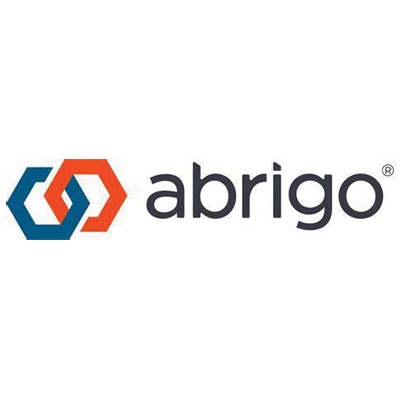Fraud isn’t only a risk to manage within financial institutions; it’s quickly becoming one of the most critical tests of trust between banks and their clients.
As fraud continues to be a climbing concern at reported losses of $12.5 billion in 2024, consumer expectations for their financial institutions remain high.
Abrigo recently conducted its second annual fraud survey to understand how fraud affects U.S. consumers and small businesses and what they expect from their financial institutions.
The 2024 Abrigo State of Fraud report uncovered how prevalent fraud had become. Fast forward to 2025, and the picture has changed, but in ways that are just as concerning.
According to the Abrigo State of Fraud report 2025, fewer people have experienced fraud this year, but the anxiety around it has grown, and so has the emotional fallout when it does happen. Here’s a closer look at how the numbers have changed and what those shifts might mean for your bank.
Fraud Is Less Frequent, but the Pressure Is Rising
In 2024, nearly half of the participants told us they had experienced financial fraud at some point. In 2025, the percentage of people who had experienced fraud dropped to 38%. That’s encouraging on the surface, but it doesn’t tell the whole story.
Concern about fraud hasn’t dropped. In fact, it’s rising, particularly regarding new threats like AI-driven scams and identity theft. Even with fewer incidents, 56% of fraud victims still reported stress or anxiety, and more than 60% said they would reduce their relationship with their bank or credit union if they were defrauded.
Customer attrition rates held steady, with about one in five respondents reporting they had left a financial institution due to fraud, regardless of fault. This underscores the growing pressure on institutions to respond swiftly and effectively to protect both reputation and retention.
Customers Are Worried About — and Open To — AI
Artificial intelligence has quickly become both a red flag and a green light for consumers. In 2024, 74% of respondents feared AI would increase successful fraud. In 2025, that number jumped to over 83%.
But here’s the twist: While concern about AI is rising, so is trust in how it can be used to prevent fraud. This year, 44% of consumers and an impressive 69% of small business owners state that they would feel safer if their institution used AI-powered fraud detection. People are beginning to accept that fraudsters are using advanced tools, and they want their banks to fight back with equally sophisticated defenses.
Transparency is key. Clients want to know what tools are being used to protect them and how those tools make a difference.
Small Businesses Are Feeling the Pressure
If you’re serving small businesses, the survey’s insights into how they’re being affected by fraud matter. Last year, half of small business owners had been targeted by fraud. This year, it jumped to nearly 60%.
The reported fraud is not minor. More business owners are encountering check fraud and AI-assisted scams. Many of them are facing losses of over $10,000, and they’re spending hours, sometimes days, to resolve the issue.
Small businesses also reported that they are more likely to walk away from a banking relationship if they feel unprotected. In this year’s survey, 30% of small businesses said they had ended a banking relationship due to a fraud event. That’s a loud and clear signal; this segment expects tailored fraud education, proactive tools and quick response when things go wrong.
Check Fraud Isn’t Going Anywhere, Even as Check Usage Decreases
It might be surprising, but check fraud continues to be one of the most persistent and damaging types of fraud we see, even as fewer people write checks. Total check fraud losses for 2024 are estimated to exceed $24 billion.
In 2024, 61% of people said they still wrote or received checks. In 2025, that number dipped only slightly. Yet, nearly half of all respondents weren’t aware that mail theft is a key driver of check fraud. Even fewer knew that using a gel pen could help prevent check washing.
Younger consumers showed higher-than-expected rates of check fraud victimization, possibly because they didn’t realize the risks. Small business owners continue to rely on checks more than most and face even greater exposure as a result.
Education and real-time check fraud detection are important ways to strengthen the relationship between a financial institution and its customers. This is a chance for banks and credit unions to be seen as trusted advisors by offering clear guidance and solid monitoring tools. For example, advising customers not to mail checks from their home mailbox and to use in-branch drop boxes or digital payments instead can go a long way in preventing fraud. Pair that with real-time alerts for suspicious check activity, and you’re not only helping protect your customers, you’re also protecting your bottom line.
Trust Still Breaks Down After Fraud
One of the most consistent findings from the survey both years is this: people don’t always stay in a banking relationship, even when their financial institution resolves the fraud quickly.
In 2024 and 2025 alike, nearly one in five respondents said they had switched banks or credit unions because of a fraud incident. Many more said they would reduce engagement even if they were satisfied with the resolution. It’s not just about how fast you fix the issue; it’s about how supported, informed and secure your customers feel throughout the process.
That’s where communication makes all the difference. Whether it’s sending fraud alerts through the customer’s preferred channel or educating them on what to do next, consistent, clear messaging builds trust that lasts beyond the crisis.
What Does All of This Mean for Your Institution
What should financial institutions take from the shift in numbers between 2024 and 2025?
Fraud isn’t just a technical problem; it’s a human one. People want to feel financially secure, and they want to understand how you’re helping them stay that way. They want you to be transparent about how you’re fighting fraud, especially when it comes to new technologies.
When a client is a small business owner, they want tailored support that acknowledges the size of the risks they face. Institutions that respond with empathy, innovation and clear communication will not only reduce fraud losses but also strengthen client relationships.
Final Thoughts: Turning Insight Into Action
The year-over-year changes in Abrigo’s fraud surveys show us that while fraudsters’ tactics may evolve, your client’s expectations remain steady. They want to be protected, informed and know you have their back.
For community banks and credit unions, this is more than a call to action. It is a chance to differentiate. The financial institutions that respond with smart fraud tools, transparent education and empathetic communication will not only reduce losses but also build the kind of trust that fuels long-term relationships, customer loyalty and community growth. Your fraud strategy should reflect your institution’s values, resilience and commitment to protecting what matters most.








